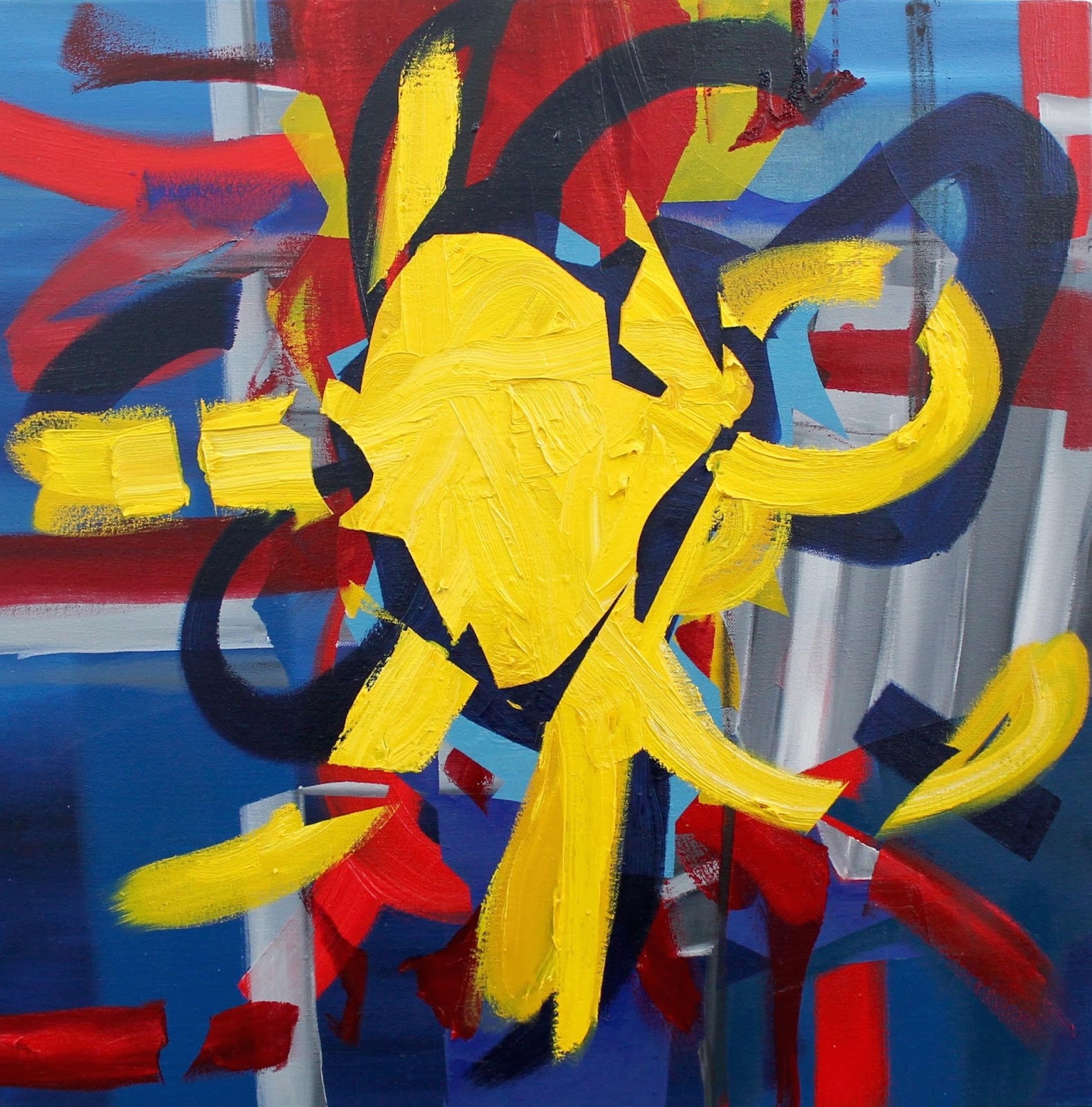05/09/17
Essay: Aisling Drennan
‘It’s absolutely impossible, but it has possibilities.’
These words from the film
producer Samuel Goldwyn might equally have been uttered by the painter Aisling
Drennan, whose colourful, layered Abstract Expressionist-style canvases are a
series of endless possibility, of unresolved experimentation, of contumacious
contradictions. Constructing and deconstructing, concealing and revealing,
Drennan’s mark-making creates both chaos and structure, a concoction of
intuition and organicness, submitted to analysis, until some form of resolve is
determined. Never a fixed conclusion, however, or, as Samuel Beckett writes: ‘Ever tried. Ever failed. No matter. Try
again. Fail again. Fail better.’[1]

But, to the viewer, Drennan’s
paintings are far from being failures. The vast, freewheeling swathes of paint
sweep you up, taking you, willing or not, on a stormy journey, a rollercoaster
ride, across and deep within the canvas, destination unknown. As painterly, or malerisch, as Drennan’s surface
brushstrokes might be, there is nevertheless a depth to her canvases, with their
partially visible geometric lines and boxes, drawn in charcoal, à la de
Kooning, leading you within, underneath the waves, drowning you in the intense
primary colours that ‘pop’ against one another in a playful, sometimes
seemingly reckless, way. ‘You have to
have colour and light,’ Drennan exclaims. ‘My god! And yellow is just a feel-good colour, really. It physically
makes me happy to look at it.’ But reds and blues, ochres, and sometimes
blacks, rear their heads as well, like animals from within, each opening a
dialogue, interrupting, rejoining, and drawing the others into a spirited conversation,
a song, or maybe even a dance. The choreography is free, but there is an underlying
internal logic, a set of steps and movements that may be exploited and utilised
in infinite combination. Drennan paints always at arm’s length, from the
shoulder and elbow, avoiding the contrivance of anything produced too
painstakingly close up. Nevertheless, there is a beautiful concentration as she
works steadily, aiming for the marathon, not the sprint. ‘Without leaps of imagination, or dreaming, we lose the excitement of
possibilities. Dreaming, after all, is a form of planning.’[2]
The lyricism of a painting
extends beyond the individual canvas, with one work leading on to the next,
which is born, inevitably, out of a ‘niggling’ point of its predecessor, begun
before its parent is fully matured. The process is empirical, as Drennan takes,
reappropriates and develops: ‘There is no
performance – it’s all one big rehearsal’. The subject she seeks to explore
is the very stuff of painting itself: its materiality and physicality. The only
narrative is a narrative of process, of exploration and development from one
work to the next – from one layer to the next – building up memories and
traces, a series of wounds and scars, with new life blossoming afresh at each
turn along the way. A work may take months to complete, as she applies masking
tape, charcoal and coats of oil paint, before removing the tape, applying more
paint, often time and time again, ever reassessing, redirecting, accepting the
inevitable but entirely unpredictable happy accident. In an age of digital
perfection, Drennan is an artist to whom the term ‘practice’ – with all the
inherent hope, failure, and possibility – truly applies.
© Anna McNay, 2017
[1] Samuel Beckett, Worstward
Ho, 1983
[2] Gloria Steinem, American feminist, journalist, and
social and political activist
Image:
Aisling Drennan
Seeking Common Sense
2017
oil paint on canvas
60x60cm
For more information, see Aisling’s website